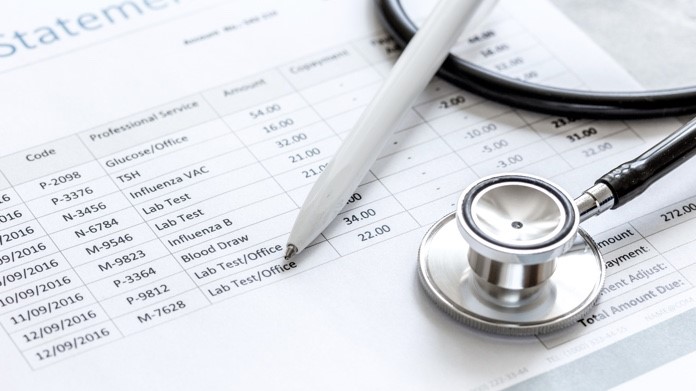We assume the best thing to do is to pay medical bills immediately.
Not always.
What often happens after a medical event is that your employee receives a bill from the doctor or hospital – and they pay it right away.
Or worse, the amount is so high they begin to worry how they will ever pay it. Then your employee starts telling everyone that your company has bad insurance.
Here’s what they need to know:
Sometimes the first bill (and even the second bill) are sent before the health insurance claim has been processed.
In general, it takes 30 to 60 days for a health insurance claim to move through the system. Even if the doctor or hospital is saying the payment is late – Hold On. Give the insurance company a chance to pay their portion of the cost.
But how do they know which is the “real bill” to pay?
The best thing to do is to look for the Explanation of Benefits.
What is the Explanation of Benefits?
Health Insurance has many terms that are confusing to the average person.
But everyone needs to know what “EOB” stands for – the Explanation of Benefits.
The Explanation of Benefits (EOB) is a document sent by a health insurance company to the employee that explains the details of medical services received and the costs associated with them.
The Explanation of Benefits is Not a bill.
This is a document from an insurance company that is normally mailed before someone receives a bill from their doctor.
There will be a column on the EOB that states the amount that ‘may’ be owed. This is the number your employees should pay attention to.
Click Here for a sample version of what the document looks like.
The Explanation of Benefits includes:
- Claims Information: Details about the claims submitted by the healthcare provider including the billed amount, the amount the insurance paid, and any adjustments or discounts applied.
- Patient Responsibility: The amount owed for the services received, including any deductibles, copays, or coinsurance that apply.
- Explanation of Payment: How the insurance provider calculated its payment and whether any part of the claim was denied.
- Codes and Descriptions: For the services provided to understand the nature of the medical treatment received.
As an employer, you should mention this document to your employees when talking about their health insurance. The Explanation of Benefits is a critical component to processing medical claims, and it is important that your employees pay attention to this document to ensure their medical bills are correct.
Why Timing Is Everything
When it comes to paying medical bills – Timing is everything.
It is recommended to pay a doctor after receiving the Explanation of Benefits.
Typically, the EOB will arrive anywhere between 30-60 days after receiving a medical service. If a person does not receive one after 60 days, it might be a good idea to check with the health provider.
It’s important to review an EOB carefully to ensure that the information is accurate and that the insurance company has paid the appropriate amount.
If someone pays a medical bill before receiving the EOB, they may not have all the information they need to make an informed decision about the charges.
This can lead to overpayment or underpayment of the bill. If part of the bill is later paid by the insurance company, then the employee must go back and get a refund from the doctor or hospital.
For example, I recently had a medical procedure at a doctor’s office. Before my appointment, the office ‘hounded’ me asking for my payment of the deductible ahead of time. I was tired and not feeling well. Frankly, I did not have the energy to argue.
What came in the mail nine weeks later? A check from the doctor’s office for my deductible. If I had paid closer attention, I would not have given my money to the doctor who had it for two months before returning it to me.
Medical Billing and Coding
The billing process for healthcare services can be complex and involves multiple steps.
Insurance carriers typically take several weeks to process a health insurance claim submitted to them from the healthcare provider. The time it takes can vary depending on the type of insurance and the complexity of the claim.
Once the health insurance company processes the claim, the healthcare provider can bill the patient for any remaining balance.
Upon receiving a bill from a doctor, it is recommended to compare it with the corresponding EOB to verify that the services and the amount due is correct.
Disputing a Medical Claim
Most of us do not want to go through the hassle and stress of disputing medical bills and claims.
It can be especially challenging to get money back if someone paid a provider before the claim was adjusted by the insurance carrier. That is why I am advocating for getting all the right documentation on the front-end as much as possible before payment is made.
If a person has already paid a medical bill and believe that there was an error or overcharge, they have the right to dispute the bill and request a refund. Once again, the Explanation of Benefits is a necessary document that is needed for this process of appeal.
In summary, getting the right documentation is the first step in verifying the accuracy of medical costs and services received. It is best to wait to pay a provider until the health insurance company has paid their portion, and the claim has been adjusted accordingly.
Discuss this with your employees so they can have the resources they need to make informed decisions about their healthcare.







